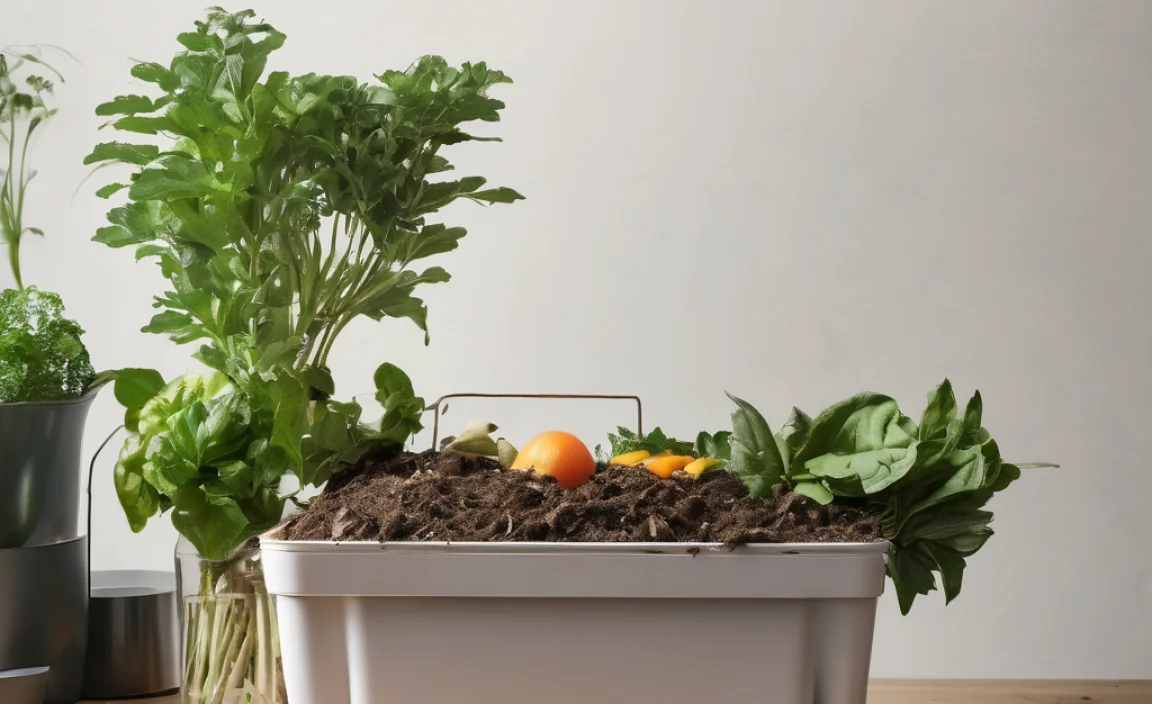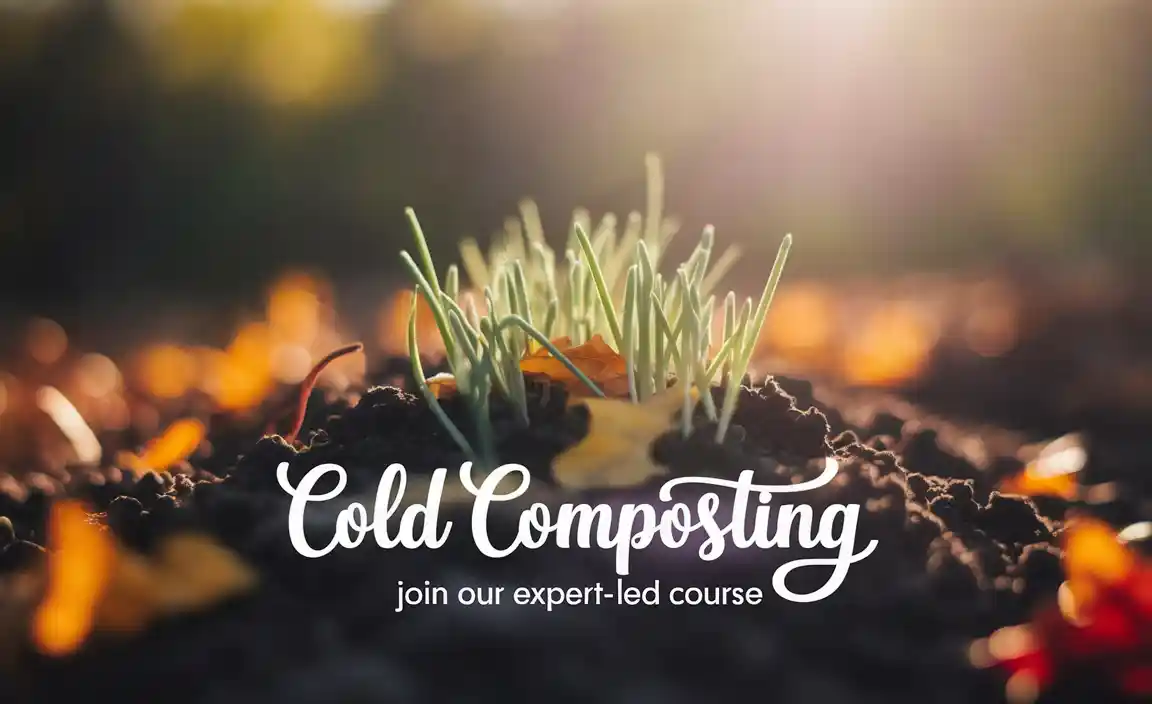Managing business waste can feel overwhelming, right? Thinking about how to cut down on what goes to the landfill, and maybe even save money, is a smart move. It can seem complicated, but it doesn’t have to be! We’re here to break down composting for your business, step-by-step, in an easy-to-understand way. You’ll be composting like a pro in no time!
Composting For Businesses Explained: Your Essential Guide
Hey there, I’m Troy D. Harn from TopChooser, and I’m all about making things like gardening, home improvement, and yes, even composting, super simple. Businesses often generate a good amount of organic waste – think kitchen scraps, paper towels, and packaging. Turning this into compost is not only great for the planet but can also be a real win for your bottom line. This guide is designed to be your go-to resource, whether you’re just starting to think about it or ready to implement a full-scale composting program. We’ll make it easy, practical, and totally achievable for your specific business needs.
Why Composting Makes Sense for Your Business
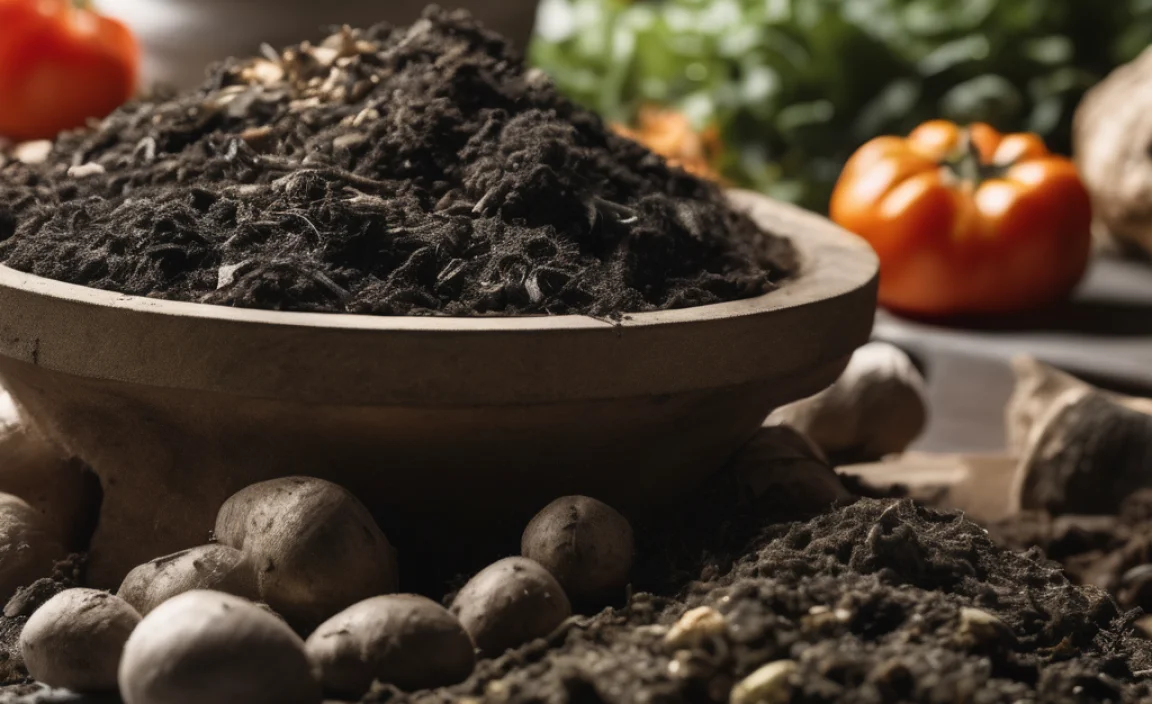
Let’s face it, businesses create waste. A big chunk of that waste is often organic material – food scraps from cafeterias or break rooms, coffee grounds, plant trimmings from landscaping, and even certain types of paper products. When these materials end up in a landfill, they don’t just sit there. They decompose anaerobically (without oxygen), releasing methane, a potent greenhouse gas. Composting offers a much better, more sustainable alternative.
Environmental Benefits
- Reduces Landfill Waste: Diverting organic materials significantly cuts down on the volume of waste sent to landfills, extending their lifespan and reducing the need for new ones.
- Decreases Greenhouse Gas Emissions: As mentioned, methane from landfills is a major contributor to climate change. Composting’s aerobic process avoids this.
- Creates Nutrient-Rich Soil: The end product of composting, called humus, is a fantastic soil amendment. It improves soil structure, water retention, and provides essential nutrients for plant growth, reducing the need for synthetic fertilizers.
- Conserves Water: Compost-rich soil holds moisture better, meaning less frequent watering for any landscaping your business might maintain.
Economic Benefits
- Potential Cost Savings on Waste Disposal: Many waste hauling contracts are based on volume or weight. Reducing the amount of trash you send to the landfill can lead to lower disposal fees.
- Improved Brand Image and Customer Loyalty: Consumers and clients increasingly value sustainability. Implementing a visible composting program can enhance your company’s reputation and attract environmentally conscious customers.
- Employee Engagement and Morale: Many employees want to work for companies that are making a positive environmental impact. A composting program can be a great way to engage your staff in sustainability efforts.
- Potential Revenue or Cost Offset: In some cases, businesses can sell excess finished compost or use it to reduce landscaping costs.
Understanding the Basics: What Can Actually Be Composted?
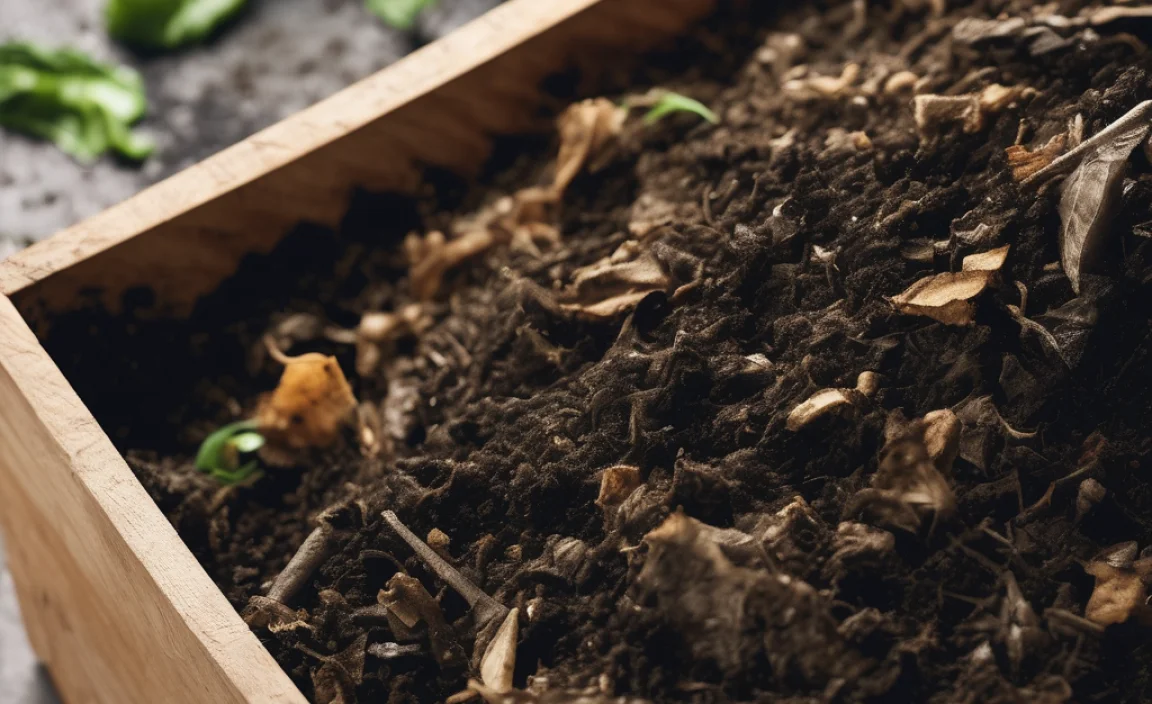
Before you dive in, it’s important to know what goes into the compost bin and what doesn’t. Generally, you want a good mix of “greens” (nitrogen-rich materials) and “browns” (carbon-rich materials). This balance is key for efficient decomposition.
“Greens” (Nitrogen-Rich Materials)
- Fruit and vegetable scraps
- Coffee grounds and filters
- Tea bags (remove staples)
- Grass clippings
- Plant trimmings
- Eggshells
- Food-soiled paper products (napkins, paper towels – check local guidelines)
“Browns” (Carbon-Rich Materials)
- Dry leaves
- Shredded cardboard (unwaxed)
- Shredded newspaper (black and white ink is best)
- Wood chips or sawdust (from untreated wood)
- Straw or hay
- Paper egg cartons
- Used paper filters and bags
What to Leave Out (Generally)
These items can cause problems like attracting pests, smelling bad, or not breaking down properly:
- Meat, fish, and bones
- Dairy products
- Oily or greasy foods
- Diseased plants
- Weeds that have gone to seed
- Pet waste (dog and cat feces)
- Chemically treated wood
- Synthetic materials
- Glossy or coated paper
Important Note: Local regulations and the specific composting method you choose might influence what you can compost. For instance, some industrial composting facilities can handle items that home composting cannot.
Choosing the Right Composting Method for Your Business
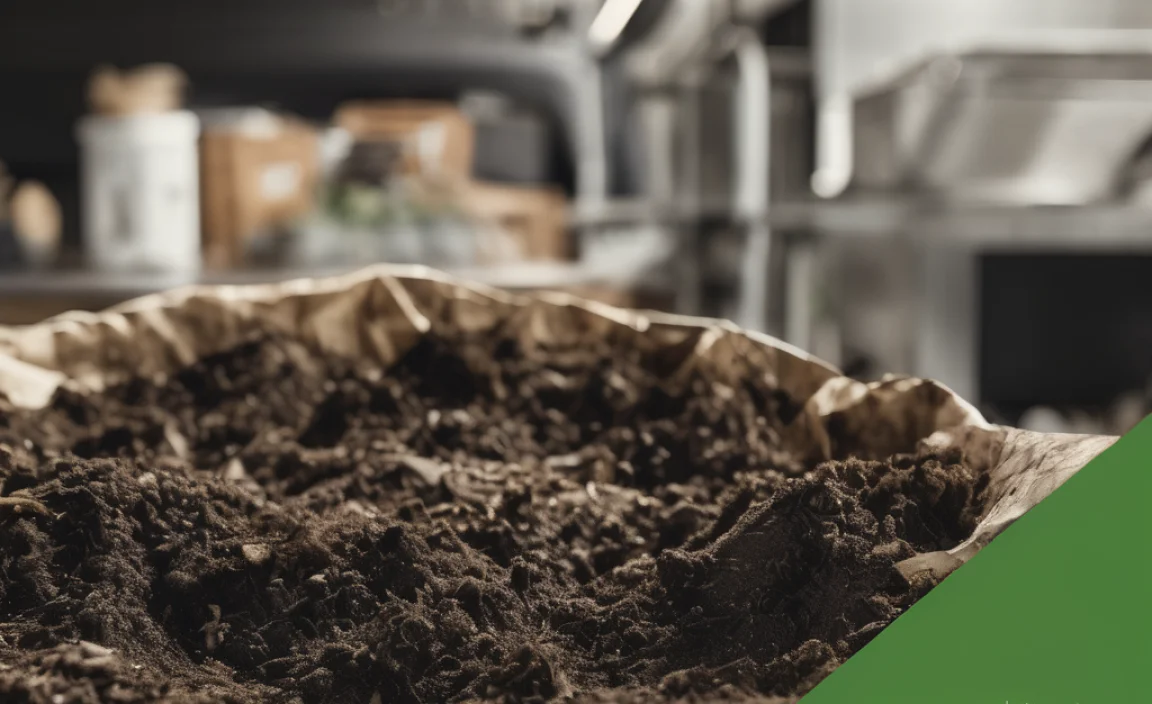
The best composting method for your business will depend on the amount of organic waste you produce, your available space, budget, and local regulations. Here are a few common options:
1. On-Site Composting
This involves setting up and managing your own composting system at your business location. This can range from simple bins to more complex windrows.
Types of On-Site Systems
- Compost Bins: Great for smaller businesses or those with limited space. You can buy various types, from stationary to tumblers. Tumblers make turning easier.
- Windrows: Large, elongated piles of organic material. Best for businesses producing significant amounts of organic waste, like restaurants or food processors. Requires more space and management.
- Aerated Static Piles (ASP): Involves forcing air through the compost pile using pipes and a blower. This speeds up decomposition and allows for higher volume without as much physical turning.
Pros: Full control over the process and product; can be cost-effective if managed well; creates a valuable resource on-site.
Cons: Requires space, training, and ongoing management; potential for odors or pests if not managed properly; initial setup costs.
2. Off-Site Composting Service (Commercial Haulers)
This is often the simplest solution for businesses that produce a moderate to high volume of organic waste. You contract with a commercial composting company that provides bins and picks up your organic waste regularly. They then process it at their facility.
Pros: Minimal effort for your business; no need for space or on-site management; often highly regulated and efficient; reliable collection.
Cons: Ongoing service fees; less direct control over the process; may not be available in all areas.
You can find local commercial composting services by searching online for “commercial organic waste hauling” or “business composting pickup” in your area. Resources like the Environmental Protection Agency (EPA) offer general composting information that can guide your understanding of the process.
3. Community or Municipal Composting Programs
Some towns and cities offer composting programs specifically for businesses. These might involve drop-off locations or subsidized pickup services.
Pros: Often more affordable than private services; supports local sustainability initiatives.
Cons: Availability is limited to specific municipalities; may have stricter guidelines on what can be accepted.
Step-by-Step Guide to Setting Up a Business Composting Program
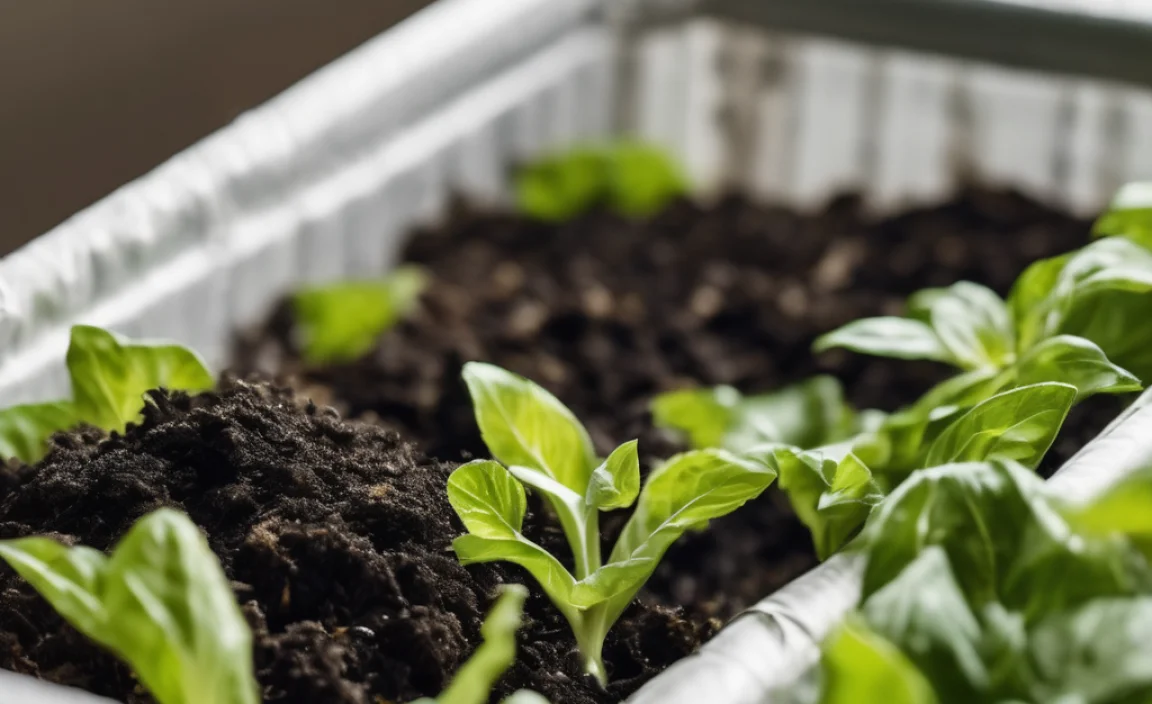
Ready to get started? Here’s a breakdown of how to implement a successful composting program. We’ll cover both on-site and contract services, as the initial steps have some overlap.
Phase 1: Planning and Preparation
Step 1: Waste Audit
Before you do anything, understand what you’re throwing away. Conduct a waste audit to see how much organic waste your business generates and what types it includes. This will help you determine the best method and scale of composting.
- Identify all waste streams (kitchen, office, landscaping, etc.).
- Estimate the volume and weight of organic waste.
- Note the types of organic materials (food scraps, paper, etc.).
Step 2: Research Local Regulations and Options
Composting rules can vary significantly. Check with your local municipality, county, or waste management authority:
- Are there local ordinances regarding composting?
- Are there commercial composting services available in your area?
- What are the requirements for on-site composting (permits, zoning)?
- What items are permitted or prohibited by local waste haulers or composting facilities? The EPA’s Commercial Property Waste Management page can be a good starting point for understanding broader waste principles.
Step 3: Choose Your Method
Based on your waste audit, available space, budget, and local options, decide whether on-site composting or a contracted service is best for you. For businesses new to composting, a contracted service is often the easiest way to start.
Step 4: Secure Necessary Equipment
If using a service:
- Contact potential service providers.
- Discuss bin sizes, pickup schedules, and pricing.
- Get appropriate bins for collecting organic waste in key areas (kitchens, break rooms, cafeterias).
If composting on-site:
- Purchase or build compost bins or set up your windrow area.
- Acquire tools like pitchforks, shovels, wheelbarrows, and potentially a chipper/shredder.
- Ensure you have a water source nearby.
Phase 2: Implementation
Step 5: Set Up Collection Points
Place clearly labeled composting bins in convenient locations where organic waste is generated. Make sure bins are easily accessible and emptied regularly to prevent odors and pests.
- Label bins clearly with “Compost” and images of acceptable items.
- Consider using smaller countertop bins for quick disposal, with larger bins for regular collection.
- Educate staff on what goes in each bin.
Step 6: Educate Your Staff
This is CRUCIAL for success! A little training goes a long way.
- Hold brief training sessions or provide clear signage.
- Explain what compostable materials are and why it’s important.
- Address common mistakes (like putting plastic bags in the compost).
- Designate “compost champions” within departments to help answer questions.
Step 7: Establish Collection and Transport (On-Site) or Pickup Schedule (Service)
For on-site systems:
- Develop a schedule for moving collected organic waste from internal bins to your main composting area.
- Ensure regular turning and monitoring of the compost piles.
For services:
- Coordinate with your chosen hauler for regular pickups.
- Ensure bins are accessible for the driver.
Phase 3: Management and Optimization
Step 8: Manage Your Compost Pile (On-Site)
If you’re composting on-site, attentive management is key.
- Balance Greens and Browns: Aim for a ratio of roughly 2-3 parts browns to 1 part greens by volume. Too many greens can lead to odor; too many browns will slow decomposition. Add brown materials to balance wet food scraps.
- Maintain Moisture: The compost pile should be damp like a wrung-out sponge, not soaking wet or dry. Water if it’s too dry, add more browns if it’s too wet.
- Ensure Aeration: Turn the pile regularly (e.g., weekly or bi-weekly) to introduce oxygen, which speeds up decomposition and prevents odors.
- Monitor Temperature: A properly working compost pile will heat up, which kills weed seeds and pathogens.
For more in-depth information on managing your compost pile, resources like those from university extension offices (e.g., UNH Extension for a general guide applicable to principles) can be very helpful.
Step 9: Monitor Progress and Troubleshoot
Regularly check your composting system. Are there any issues?
- Odors: Usually indicate too much green material, lack of aeration, or too much moisture. Add browns and turn the pile.
- Pests: Can be attracted by uncovered food scraps or improper bin storage. Ensure bins are sealed and buried food scraps under a layer of browns.
- Slow Decomposition: May mean the pile is too dry, lacks nitrogen (greens), or is too small.
Step 10: Utilize Finished Compost
Once the organic material has decomposed into dark, crumbly humus, it’s ready! You can use it around your business’s landscaping, donate it, or sometimes even sell it. It’s a great way to close the loop and showcase your sustainability efforts.
Key Tools and Equipment for Business Composting

Whether you’re managing your own piles or just collecting for a service, having the right tools makes the job easier and more efficient.
| Tool/Equipment | Purpose | Considerations for Businesses |
|---|---|---|
| Collection Bins (Indoor) | Collecting food scraps and other organics within kitchens, break rooms, etc. | Durable, easy to clean, sealable lids to control odors and pests. Various sizes needed depending on location and volume. Clear labeling is essential. |
| Larger Collection/Transport Bins (Outdoor) | Holding collected organics before pickup or transfer to compost piles. | Weather-resistant, rodent-proof, large capacity. May be provided by a service. |
| Compost Bins/Structures (On-Site) | Containing and facilitating the decomposition process. | Options include stationary bins, tumblers, or building custom bays for larger operations. Material (wood, plastic, metal) and design depend on volume and climate. |
| Pitchfork/Compost Turner | Aerating and turning compost piles. | Sturdy construction for handling large volumes. Essential for active on-site composting or windrows. |
| Shovel | Moving materials, filling bins. | Standard garden shovel is useful, heavy-duty models for larger tasks. |
| Wheelbarrow | Transporting materials to and from the compost pile. | Durable, easy to maneuver, large capacity. |
| Hose/Water Source | Maintaining optimal moisture levels. | Easy access to water is crucial for on-site systems. |
| Shredder/Chipper (Optional) | Reducing the size of bulky brown materials (cardboard, yard waste). | Can greatly speed up decomposition but is a significant investment and requires safety training. |
| Thermometer (Compost Specific) | Monitoring compost pile temperature for optimal decomposition and pathogen kill. | Long probe needed to reach into the center of piles. |
Challenges and Solutions in Business Composting
Even with the best intentions, businesses can face hurdles. Here are some common challenges and practical solutions:
Challenge: Odors
Solution: Odors are typically a sign of anaerobic conditions (lack of oxygen) or too much nitrogen (greens).
- Ensure adequate aeration by turning the pile frequently.
- Add more carbon-rich “brown” materials (leaves, shredded cardboard) to balance nitrogen-rich “greens.”
- Manage moisture – a pile that’s too wet can also become smelly.
- If using a service, ensure bins have tight-fitting lids and are emptied on schedule.
Challenge: Pests (Rodents, Flies)
Solution: Pests are usually attracted by exposed food scraps or the smell of decomposing food.
- Always cover food scraps with a layer of brown material in on-site piles.
- Use bins with secure, tight-fitting lids.
- Empty indoor collection bins frequently.
- Consider a tumblr composter, which is generally more pest-resistant.
- For services, ensure bins are clean and lids are always closed.
- Avoid adding meat, dairy, or oily foods, which are particularly attractive to pests.
Challenge: Contamination (Non-Compostable Items)
Solution: This requires consistent education and clear labeling.
- Provide

I am passionate about home engineering. I specialize in designing, installing, and maintaining heating, ventilation, and air conditioning systems. My goal is to help people stay comfortable in their homes all year long.

